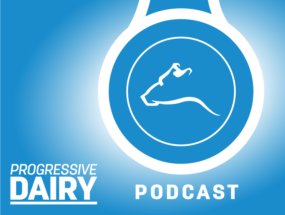Pests can be costly to dairy farmers due to disease transmission and irritation. Whether pests feed upon animals or are simply a nuisance, they can reduce milk production and decrease weight gains.
Know your pest control options
- Prevent birds from congregating in freestalls, calf barns and bunkers. They’re flying sources of bacteria and parasites. Bird control methods range from simple solutions such as visual scares (lifelike owls or reflective surfaces that blow in the wind) to high-tech laser and electronic products.
- Use rodenticides to prevent rat and mice populations from contaminating feed sources. Also keep in mind that while dogs and cats are a welcome addition on many farms, discourage domestic animals from entering feed storage areas.
- Control insects using a combination of products that attack at different stages of their life cycle. Larvicides target the larvae stage of a fly and are available in the form of biologicals, baits and feed additives. Adulticides are used to combat adult flies and are found in baits, sprays, pour-ons and traps.
- Consider biological options such as fly predators or parasites. These small warriors attack immature flies before they reproduce.
- Apply chemical insecticides. There are a wide variety of options including pour-ons, dust bags and oilers, insecticide eartags, sprays, traps and baits. Rotate products yearly to avoid resistance.
- Prevent flies from developing and emerging from manure by adding feed-through fly control supplements or mineral blocks to your livestock’s feeding regimen. A general rule is to feed 30 days before the last frost in the spring until 30 days after the last frost in the fall.
Minimize the environment for pests
- Use strategically placed fans. Many insects are less noticeable on windy days because they have difficulty flying in these conditions. You can create this same condition.
- Reduce the number of potential insect breeding areas. Many insects need moisture to reproduce; therefore keep calf housing and stalls as clean and dry as possible. Layer only as much bedding as needed and ensure there is proper drainage in wet areas.
- Keep doors and windows closed or install screens in areas where sanitary conditions are most important, such as the milk room.
- Rotate pastures to reduce fecal material which, in turn, decreases the amount of attractive breeding areas for flies.
- Be on the lookout for problem areas such as insect and rodent nests, pooling water, rotting silage or damaged feed bags. Address these areas quickly rather than waiting for the problem to multiply.
Have a plan to reduce pinkeye
As you make pest control preparations, also consider your pinkeye strategy. Pinkeye is spread by face flies and house flies feeding on secretions and then traveling from animal to animal. Reduce the severity and number of cases in your herd by vaccinating 30 days before the start of fly season with conventional or autogenous vaccines. ![]()
PHOTO: Fly season. Staff photo.

-
Armon Hetzel
- Veterinarian
- Animart







